|
Books Should Be Free Loyal Books Free Public Domain Audiobooks & eBook Downloads |
|
|
Books Should Be Free Loyal Books Free Public Domain Audiobooks & eBook Downloads |
|
Science |
|---|
|
Book type:
Sort by:
View by:
|
By: Lenore Elizabeth Mulets (1873-?) | |
|---|---|
 Stories of Birds
Stories of Birds
This volume contains stories, poems, myths, and facts about lots of different birds, intended for teaching children. It is divided into nine parts, each covering a different type of bird. | |
By: Leonardo da Vinci | |
|---|---|
 The Notebooks of Leonardo Da Vinci
The Notebooks of Leonardo Da Vinci
The Notebooks of Leonardo Da VinciPREFACEA singular fatality has ruled the destiny of nearly all the most famous of Leonardo da Vinci's works. Two of the three most important were never completed, obstacles having arisen during his life-time, which obliged him to leave them unfinished; namely the Sforza Monument and the Wall-painting of the Battle of Anghiari, while the third--the picture of the Last Supper at Milan--has suffered irremediable injury from decay and the repeated restorations to which it was recklessly subjected during the XVIIth and XVIIIth centuries... | |
By: Lester Del Rey (1915-1993) | |
|---|---|
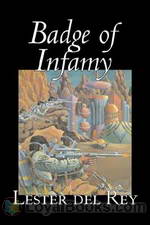 Badge of Infamy
Badge of Infamy
Shifting between Earth and Mars, Badge of Infamy focuses on the gripping tale of a former doctor who becomes a pariah due to being temporarily governed by emotion and compassion, rather than complying with the highly regarded rules established by the Medical Lobby. Furthermore, the novel covers numerous topics including justice, brutality, betrayal, ethics, political control, and lobbying. Set in the year 2100, the novel begins with the introduction of its protagonist, Daniel Feldman, an ethical man, who makes the terrible mistake of going against the fixed medical protocol and performing surgery to save the life of a friend... | |
By: Lester del Rey | |
|---|---|
 Victory
Victory
Lester del Rey (1915 – 1993) was a Golden Age science fiction author and editor closely connected to John W. Campbell Jr. and Astounding Science Fiction magazine. He also founded Del Rey Books, a popular publishing label he edited with his wife Judy-Lynn. Victory is the story of an undefended Earth in a warring galaxy. It appeared in the August 1955 issue of Astounding Science Fiction. | |
 Police Your Planet
Police Your Planet
Bruce Gordon looked at his ticket, grimaced at the ONE WAY stamped on it, then tore it into bits and let the pieces scatter over the floor. He counted them as they fell; thirty pieces in all, one for each year of his life. Little ones for the two years he'd wasted as a cop. Shreds for the four years as a kid in the ring before that--he'd never made the top. Bigger bits for two years also wasted in trying his hand at professional gambling; and the six final pieces that spelled his rise from special reporter helping out with a police shake-up coverage, through a regular leg-man turning up rackets, and on up like a meteor until... | |
By: Lewis Carroll | |
|---|---|
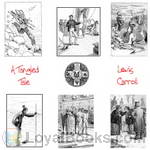 A Tangled Tale
A Tangled Tale
Lewis Carroll (1832-1896) is famous for Alice’s Adventures in Wonderland. It is less widely known that he worked as a lecturer for mathematics at Christ Church college, Oxford for 27 years. A tangled tale merges his two talents as storyteller and mathematician. It consists of ten short humorous stories which present one or more mathematical problems. The ten knots as they are called, were first published in The Monthly Packet magazine between April 1880 and March 1885, where readers were invited to solve the problems, and the solution was discussed in a later issue. | |
By: Lewis Terman (1877-1956) | |
|---|---|
 Measurement of Intelligence
Measurement of Intelligence
An explanation of and a completed guide for the use of the Stanford revision and the Simon Binford intelligence test - Summary by the soloist | |
 Genetic Studies of Genius, Volume 1: Mental and Physical Traits of a Thousand Gifted Children
Genetic Studies of Genius, Volume 1: Mental and Physical Traits of a Thousand Gifted Children
It should go without saying that a nation's resources of intellectual talent are among the most precious it will ever have. The study of the lives of gifted children initiated by Professor Lewis M. Terman, began in 1921, and has become the longest running longitudinal study in the field of psychology. Published over 5 volumes, the study is of historical significance to the field of educational science as well as psychology, for providing an insight into the nature of intelligence and achievement, but also challenging stereotypes of the personality of the gifted... | |
By: Louis Compton Miall (1842-1921) | |
|---|---|
 History of Biology
History of Biology
A history of biology from ancient times to Darwin and Pasteur by Louis Compton Miall, Professor of Biology, Fellow of the Royal Society, Fullerian Professor of Physiology and Comparative Anatomy at the University of Leeds. This book covers all the major advances in botany and zoology through the mid-1800's and concludes with the impact that Darwin's "Origin of Species" and Pasteur's research into microorganisms will have on future generations of biologists. “Science knows no country, because knowledge belongs to humanity, and is the torch which illuminates the world.” – Louis Pasteur | |
By: Louise DeKoven Bowen (1859-1953) | |
|---|---|
 Colored People of Chicago
Colored People of Chicago
This book presents a summary of the findings conducted by the the Juvenile Protective Association in Chicago before the changes brought on by the war-time economy. The study's researchers were A. P. Drucker, Sophia Boaz, A. L. Harris, and Miriam Schaffner. Its author, Louise DeKoven Bowen was a well-known philanthropist and suffragist in Chicago. The summary makes no strong argument on its own, but presents simple facts and observations that would alert the reader to the need for social and economic reform in the city. - Summary by KevinS | |
By: Luther Newton Hayes (1883-1978) | |
|---|---|
 Chinese Dragon
Chinese Dragon
The subject of this little book [1923] is of general interest to people who are acquainted with things Chinese. The dragon has played a large part in Chinese thought through four thousand and more years…. The author is peculiarly fitted to undertake this piece of work. He was born in China and speaks the Chinese language as a native. Thus, he has had the first-hand knowledge and the language to help him in his study. He has been studying on the subject of the dragon for fourteen years. In this time, he has traveled over more than one half the number of provinces of China…... | |
By: Lyman Abbott (1835-1922) | |
|---|---|
 Darkness and Daylight; or, Lights and Shadows of New York Life
Darkness and Daylight; or, Lights and Shadows of New York Life
A Pictorial Record of Personal Experiences by Day and Night in the Great Metropolis, with hundreds of thrilling anecdotes and incidents, sketches of life and character, humorous stories, touching home scenes, and tales of tender pathos, drawn from the bright and shady sides of the great under world of New York. By Mrs. Helen Campbell, City Missionary and Philanthropist; Col. Thomas W. Knox, Author and Journalist; and Supt. Thomas Byrnes, Chief of NY Police and Detectives. With highly interesting descriptions of little known phases of New York life; and an account of Detective Byrnes' thirty years' experiences and reminiscences written by himself from his private diary... | |
By: M. M. Pattison Muir (d1931) | |
|---|---|
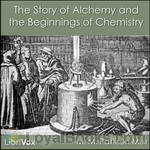 The Story of Alchemy and the Beginnings of Chemistry
The Story of Alchemy and the Beginnings of Chemistry
A light journey through the history of chemistry, from its start in the obscure mysteries of alchemy to what was, for the author, the cutting edge of the development of modern atomic theory … and whose developing blind ends we can now see with the advantage of hind sight. | |
By: Mack Reynolds (1917-1983) | |
|---|---|
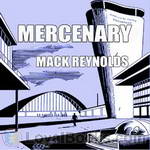 Mercenary
Mercenary
Every status-quo-caste society in history has left open two roads to rise above your caste: The Priest and The Warrior. But in a society of TV and tranquilizers--the Warrior acquires a strange new meaning... (Introduction from the Gutenberg text) | |
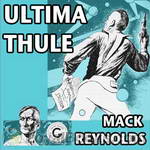 Ultima Thule
Ultima Thule
Ronny Bronston has dreamed all his life of getting a United Planets job that would take him off-world. He finally gets the opportunity when he is given a provisional assignment with Bureau of Investigation, Section G. But will he be able to complete his assignment and find the elusive Tommy Paine? | |
By: Mae Franking | |
|---|---|
 My Chinese Marriage
My Chinese Marriage
Mae Watkins, a University of Michigan student, unexpectedly falls in love with a Chinese international law student in the midst of World War I. Despite the socially unacceptable pairing the couple decide to tie the knot and forge ahead with an unsure future. Mae demonstrates her unique ability to observe and describe a foreign culture after their move to Shanghai. She documents in detail her perceptions of Chinese fashion and food in addition to her knowledge of such controversial customs as foot binding and widow suicide... | |
By: Margaret Burnham | |
|---|---|
 The Girl Aviators and the Phantom Airship
The Girl Aviators and the Phantom Airship
Teenagers Peggy Prescott and her brother Roy share a love of aviation that they inherited from their late father. Mr. Prescott had always dreamed of building an aeroplane that would be free of the defects of planes already invented. Peggy and Roy manage to build a plane starting with the framework their father had begun. Peggy christens it ‘The Golden Buttefly’ and she and Roy are determined to enter it in a young aviator’s contest for a prize of $5000. The Prescotts need the money desperately to save the home they share with their aunt which is about to be taken from them by the rather nasty banker, Mr... | |
By: Margaret Herschel (1810-1884) | |
|---|---|
 Memoir and Correspondence of Caroline Herschel
Memoir and Correspondence of Caroline Herschel
For many people, the name Caroline Herschel will be unfamiliar, but she was one of the most significant women on the English scientific scene during the late 18th and early 19th century. Sister of the well known William Herschel , she first worked as his assistant in his astronomical works, and then went on to become a noted astronomer in her own right. She discovered eight new comets in her lifetime, and was the first woman to be paid for her contribution to science, and was awarded a Gold Medal... | |
By: Margaret Warner Morley (1858-1923) | |
|---|---|
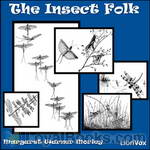 The Insect Folk
The Insect Folk
Through delightful outings with her students, a teacher introduces her class to the fascinating world of insects. She encourages her students to observe and ask questions. This is a wonderful science text for young children. | |
By: Marie Curie (1867-1934) | |
|---|---|
 Radioactive Substances
Radioactive Substances
Marie Curie, born in Warsaw in 1867, was a French physicist and chemist famous for her work on radioactivity. She was a pioneer in the field of radioactivity and the first person honored with two Nobel Prizes - in physics (1903) and chemistry (1911). The risks of working with strongly radioactive materials were not known at that time, and she eventually died in 1934 from an illness likely caused by radiation poisoning.Radioactive Substances is the thesis of Marie Curie, presented to the Faculté de Sciences de Paris in 1903, and subsequently published in "Chemical News" vol 88, 1903... | |
By: Marion Harland (1830-1922) | |
|---|---|
 Marion Harland's Complete Etiquette
Marion Harland's Complete Etiquette
Haven't you always wondered how to properly accept a formal dinner invitation? Perhaps you have a débutante under your wing, in which case you need to make sure her appearance in society goes perfectly, to increase her chances of a brilliant match. And what exactly would be your duties as her chaperon? These and many other questions are expertly answered by Marion Harland in this little volume. - Summary by Carolin | |
By: Mary Proctor (1862-1957) | |
|---|---|
 Stories of Starland
Stories of Starland
Henry asks his sister Mary about the sky. She tells him all about the Sun, the Planets, the Moon, Comets and Meteors, and Stars. Mary tells her brother about mythologies people believed about the earth and sky along with true scientific information. | |
By: Mary Earle Hardy (1846-1928) | |
|---|---|
 Sea Stories for Wonder Eyes
Sea Stories for Wonder Eyes
Water is fascinating! Which child is not delighted by the sea shore, by rivers, even by puddles in the street? This little book explains to children that a river can cut through rock to weave its way to the sea, how sand is made, and how fish can breathe underwater. Grown-ups may learn some new things, too! - Summary by Carolin | |
By: Mary Huestis Pengilly | |
|---|---|
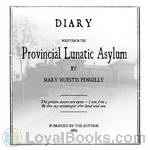 Diary Written in the Provincial Lunatic Asylum
Diary Written in the Provincial Lunatic Asylum
Mary Pengilly was taken to a Lunatic Asylum by her sons where she kept a diary, which this book is taken from. Mary records the harsh conditions and treatments received at the hands of the nurses during her stay. Once Mary is released she takes it upon herself to make the authorities aware of the situation at the Provincial Lunatic Asylum. | |
By: Mary Marcy (1877-1922) | |
|---|---|
 Stories of the Cave People
Stories of the Cave People
"In this little book I have sought, in a series of stories or sketches, to present only the first steps in human progress. Man has risen from a stage of lowest savagery, little higher than the apes, buffeted by the hand of Nature, dependent upon the wild game he might kill or the food he found ready to hand, a fearing and a furtive creature of the forests and of the plains, preyed upon by a thousand stronger foes, to a being able to provide warmth and clothing and shelter against the rains and the cold and food against the seasons... | |
By: Mary Shauffler Labaree (1868-1954) | |
|---|---|
 Child in the Midst: A Comparative Study of Child Welfare in Christian and Non-Christian Lands
Child in the Midst: A Comparative Study of Child Welfare in Christian and Non-Christian Lands
Chapters follow the progression of a child from birth through working years.Thus, Chapter 1 traces the child from newborn to toddler stage in the home. It includes assumed rights of children and mothers, superstitions, diseases and treatments, and what missions are contributing. Continuing on, Chapter 2 compares homes in various countries, explains the need for teaching the mothers, and delves into roles of fathers and missions. Other chapters explore the importance of play, the clash between play and work, views on education, and the role of worship. | |
By: Mary Wollstonecraft (1759-1797) | |
|---|---|
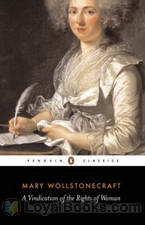 A Vindication of the Rights of Woman
A Vindication of the Rights of Woman
Regarded as the one of the earliest examples of feminist philosophy, A Vindication of the Rights of Woman is written as a direct response to Charles Maurice de Talleyrand-Périgord, a French politician who delivered a report to the French National Assembly suggesting that women should only receive domestic education and additionally encourages women to stay clear of political affairs. In her treatise, Wollstonecraft avidly criticizes this inadequate perception of women as an inferior sex and attacks social inequality, while also arguing for women’s rights in the hope of redefining their position both in society and in marriage... | |
 Vindication Of The Rights Of Men, In A Letter To The Right Honourable Edmund Burke; Occasioned By His Reflections On The Revolution In France
Vindication Of The Rights Of Men, In A Letter To The Right Honourable Edmund Burke; Occasioned By His Reflections On The Revolution In France
Wollstonecraft's A Vindication of the Rights of Men attacks aristocracy and advocates republicanism. It was published in response to Edmund Burke's Reflections on the Revolution in France , which was a defence of constitutional monarchy, aristocracy, and the Church of England, and an attack on Wollstonecraft's friend, the Rev Richard Price. Hers was the first response in a pamphlet war that subsequently became known as the Revolution Controversy, in which Thomas Paine's Rights of Man became the rallying cry for reformers and radicals... | |
By: Mary Wollstonecraft Shelley | |
|---|---|
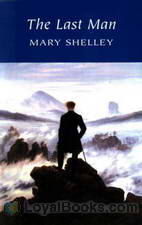 The Last Man
The Last Man
The Last Man is an early post-apocalyptic science fiction novel by Mary Shelley, which was first published in 1826. The book tells of a future world that has been ravaged by a plague. The plague gradually kills off all people. Lionel Verney, central character, son of a nobleman who gambled himself into poverty, finds himself immune after being attacked by an infected “negro,” and copes with a civilization that is gradually dying out around him. | |
By: Mason Long (1842-1903) | |
|---|---|
 Save the Girls
Save the Girls
Save the Girls is an 1880 American anti-white-slavery book by reformed gambler Mason Long. In it, the author crusades against the social evil of prostitution by presenting a series of pathetic portraits of young women from various social classes who are brought low by such temptations of city life as the theater, the racecourse, and street flirtations. Included are vignettes of vice like "The Evils of Dancing - Sad Results of a Public Ball," in which innocent Marie, out for a good time, falls prey to the type of 'sporting men' who prowl such events in search of a partner for more than just The Glide or the Boston Dip. | |
By: Maurice Maeterlinck (1862-1949) | |
|---|---|
 The children's Life of the Bee
The children's Life of the Bee
Buzz, buzz, buzz. A fascinating and beautifully written explanation of the life of the honey bee. Is the queen the master of the hive or just a hard working servant? What is the purpose of the drones? Why do bees make honey? Do bees ever sleep? Why do bees swarm? Maeterlinck, who won the Noble Prize for Literature, wrote a more scholarly work called The Life of the Bee but then rewrote it in simpler terms so that children could appreciate what goes in a hive. The book describes in simple language the inner workings of a hive from its beginning with a swarm to the fully functional hive with thousands of workers, drones and a queen busily building, repairing and gathering. | |
By: Meriel Buchanan (1886-1959) | |
|---|---|
 Recollections of Imperial Russia
Recollections of Imperial Russia
In this memoir, Meriel Buchanan links the history of Russia to powerful, lingering memories of her years living there. She was the daughter of the man who turned out to be the last British ambassador to Imperial Russia. As a young adult, in her role as the ambassador’s daughter, she had regular access to the court of Tsar Nicholas II of Russia, providing her with unusual experiences and impressions. She describes first hand the sights, sounds, and some of the activities she remembers from this elevated and sheltered vantage point. The family left Russia in 1918, and the author’s memories are filled with nostalgia and longing for the Russia she experienced. - Summary by Jan M. | |